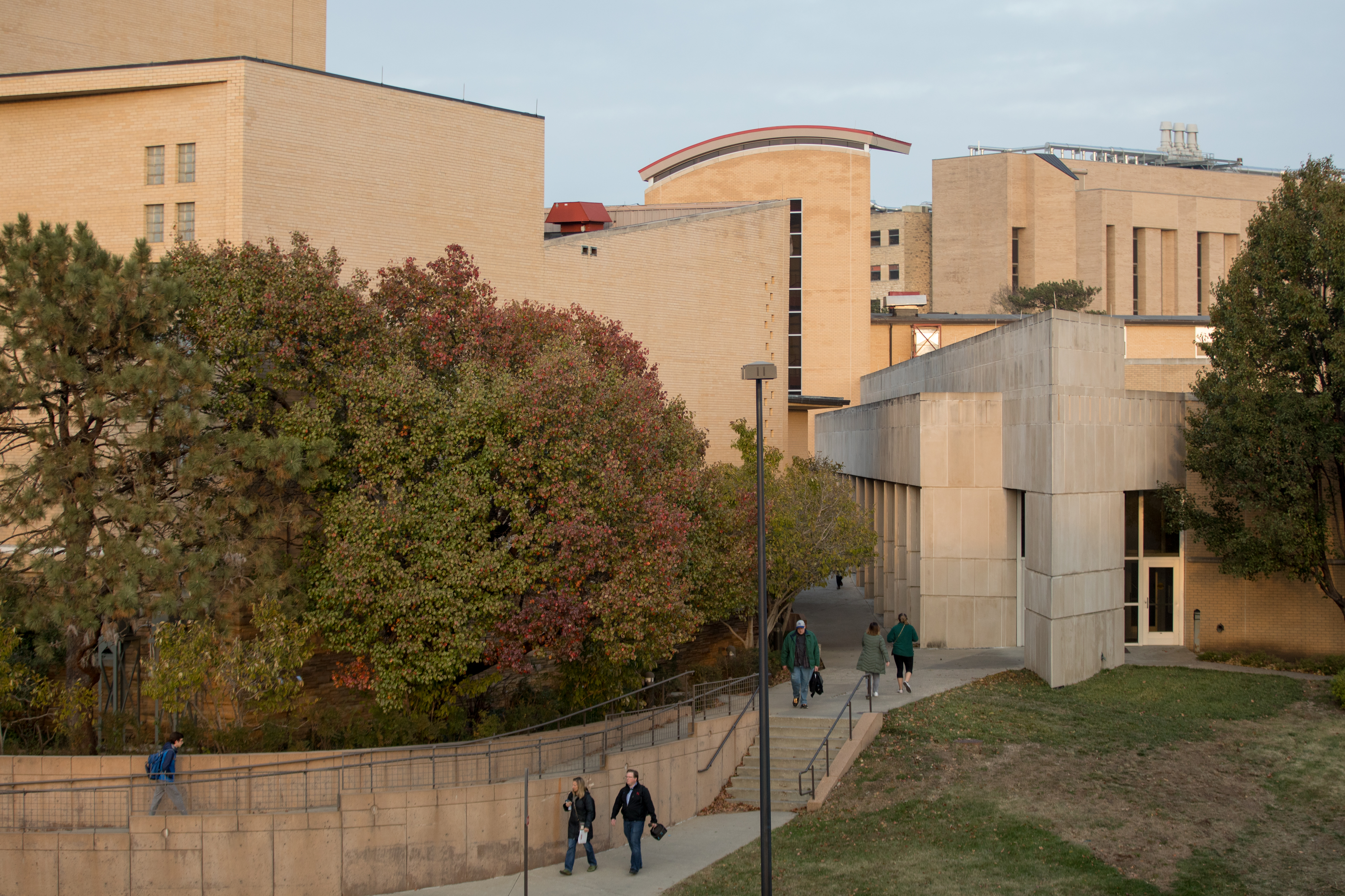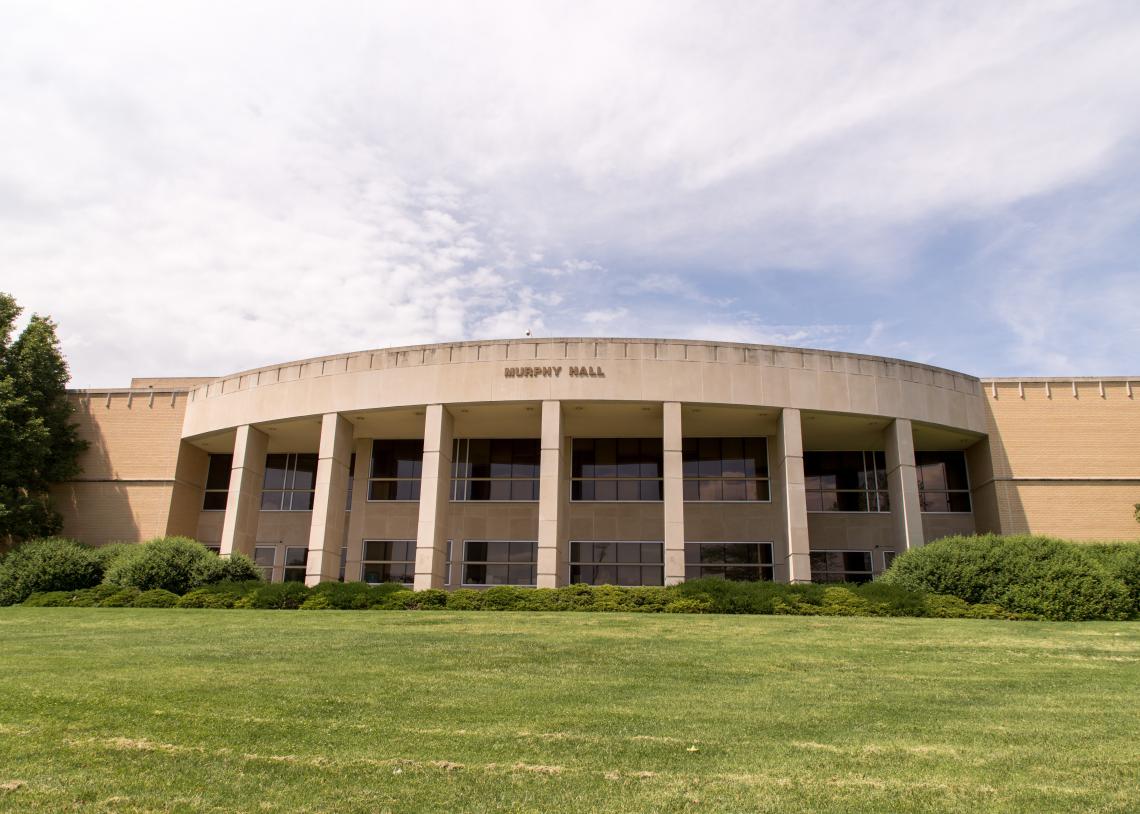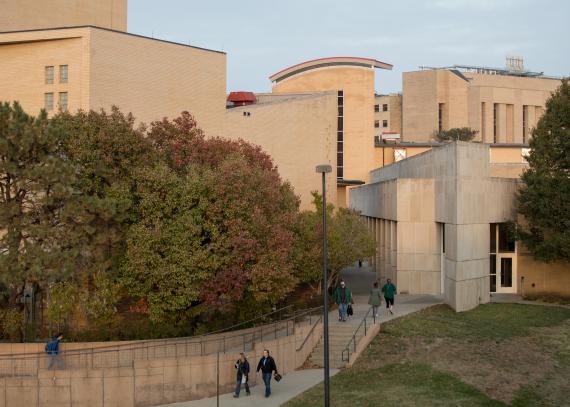Murphy Hall





A long campaign for a dedicated building for the performing arts culminated in 1957, when the music and theater departments moved into the new Murphy Hall.
It is named for Franklin Murphy, chancellor 1951-60 and a generous patron of the arts. The yellow-buff brick and crab-orchard limestone building was designed by Brinkman & Hagan of Emporia and dedicated Nov. 10, 1957.
It consolidated studio, rehearsal and performance space; costume and stage shops; a recording studio; music therapy labs; and faculty and staff offices for the music, dance, and theater departments. The administrative offices for the School of Fine Arts were also in Murphy.
A $9.8 million addition to Murphy Hall, designed by Horst, Terrill & Karst of Topeka, was completed in 2001. Its centerpiece is the Thomas A. Gorton Music and Dance Library, named for the dean of fine arts 1950-75. Also in Murphy are the Richard M. Wright Jazz Archives and James Seaver Opera Archive, together making up the KU Archive of Recorded Sound; and the Kansas Center for Music Technology.
In 2009, an administrative reorganization created the School of Music, housed in Murphy Hall; and the School of the Arts, affiliated with the College of Liberal Arts & Sciences. It comprises the departments of film and media studies, theatre and dance, and visual art. The offices for these departments remain in Chalmers or Murphy halls. Several design programs are now affiliated with the School of Architecture & Design but remain housed in Chalmers.
Performing spaces
Crafton-Preyer Theatre: Capacity 1,160
Named for Jesse Allen Crafton (1890-1966), founder of the Department of Speech and Drama, and for Carl Adolph Preyer (1863-1947), pianist/composer and faculty member for 56 years. Offerings: plays, musicals, opera, concerts.
Swarthout Recital Hall: Capacity 273
Named for Donald Swarthout, dean of fine arts 1923-50. Remodeled in 2015 with new acoustical treatments; audio, lighting, recording, and webcasting capabilities; green room; and Steinway piano. Offerings: faculty and student solo and chamber-music performances.
Robert F. Baustian Theatre: Capacity 130
Named for the director of orchestra and opera, 1957-66; gift of David and Deborah Holloway; dedicated Dec. 2, 2004. Opera and Musical Theatre Complex has black-box theatre, classrooms, dressing rooms, shop areas. Offerings: opera performances and workshops.
William Inge Memorial Theatre: Capacity 110
Named for playwright William Inge (1913-73), 1935 theatre graduate; “Picnic” (Pulitzer Prize and Drama Critics Circle Award), “Splendor in the Grass” (Academy Award for screenwriting), “Come Back, Little Sheba,” “Bus Stop.” Offerings: plays and showcases.
The School of Fine Arts was founded in 1891, combining the Department of Music, established in 1877, and the Department of Art, established in 1885. Between 1893 and 1917 the school was housed in the increasingly decrepit North College, the university's first building, until it was declared unfit for occupation.
The music department moved to a house on Tennessee Street for several years. Later, rooms in the basement and first floor of the new Administration Building (later Strong Hall) were used by music; visual art had studios and classrooms on the top floor.
The theatre department performed in Green Hall and Old Fraser’s auditorium, whose organ was used for recitals. Hoch Auditorium also was used for concerts and theatre performances.
By the early 1970s Bailey Annex, Memorial Stadium, Flint Hall, Chamney House and Barn, the Wesley Building, and a duplex on 14th Street also were used by music and art students.


